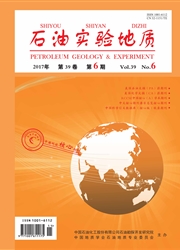

 中文摘要:
中文摘要:
沉积盆地不整合面上地层剥蚀量恢复方法很多,按学科可分为4大类:基于古温标的地热学方法、基于地层学或沉积学原理的地质学方法、基于测井或地震数据的地球物理学方法和基于物质扩散或累积原理的地球化学方法。每类方法都有其自身的适用条件和局限性,实际应用中,必须根据盆地的发育、沉积构造演化以及不整合面分布等特征,选择最有效的方法或方法组合。分析认为:在数据质量可靠的情况下、并且同时满足地层构造层序中的下构造层较上构造层经历了更高的古地温这一基本条件,古温标镜质体反射率和磷灰石裂变径迹古地温梯度法是首选方法;对于中新生代沉积盆地,可以选择孔隙度法和或声波时差法与古地温梯度法相结合进行地层剥蚀量恢复;对于显生宙以来的多旋回叠合盆地,首先应该对盆地的沉积、构造演化历史进行仔细分析,利用地层对比法定性约束剥蚀量的范围,然后再应用地热学方法和或沉积波动分析法进行定量计算。
 英文摘要:
英文摘要:
Multi-type restoration methods to estimate the thickness of eroded sedimentary rocks can be categorized into four types: geothermal, geological, geophysical and geochemical methods based on paleothermal index, stratigraphical or sedimentary principles, logging Or seismic data and diffussion or accumulation theory, respectively. Every type has its own effective conditions or limits in application to estimate the eroded thickness of rocks. In practical application, it should make sure to select the most effective methods or their combinations according to development, structural evolution and unconformity surface of sedimentary basins. It was considered by integrated analysis that paleo-temperature vitrinite reflectence fro) and paleo-temperature gradiends of apatite fission-track (AFT) are primary choices un- der conditions of strata reliabilities in combination with basic condition that lower tectonic layer underwent higher paleo-temperature than upper sequence. As for Mesozoic--Cenozoic sedimentary basins, We can choose porosity methods and/or acoustic travel interval time in combination with paleo temperature gradients to carry out restoration of eroded thickness. And for multicycle superimposed basins since Phanerozoic, we should carefully analyse sedimentary features and evolution history of basins, qualitatively constraint ranges of eroded thickness using stratigraphic correlation methods then quantitatively calculate using geothermal data and/or sedimentary wave analysis.
 同期刊论文项目
同期刊论文项目
 同项目期刊论文
同项目期刊论文
 期刊信息
期刊信息
